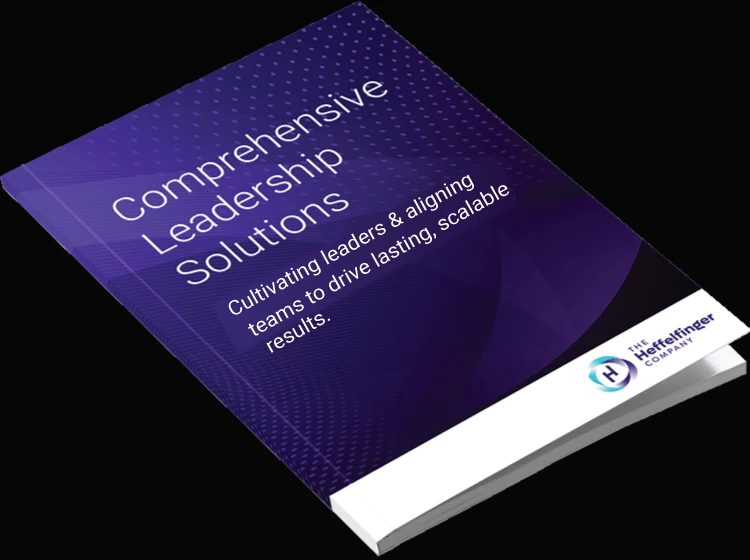“In my experience, the most important part [of merging two companies] to get right is merging the two company cultures. Culture is a bit hard to define. It’s your operating rhythm…Not getting that culture merge right is serious. It will hit morale first, customers next, and finally the bottom line.” - Thomas Cardella, Founder and CEO, TLC Associates.
In today’s interconnected world, the ability to navigate diverse cultural landscapes is no longer just a nice thing to have; it’s a critical skill for business leaders aiming to thrive in a global market. As workplaces become more diverse and organizations expand through mergers and acquisitions, understanding and adapting to different cultural norms can mean the difference between success and stagnation. But what exactly is cultural agility, and how can mastering it propel your organization forward?
What is Cultural Agility?
Cultural agility is the ability to effectively navigate and blend diverse cultural perspectives in a way that fosters collaboration and understanding. It’s the skill that enables employees to bring their unique backgrounds to the workplace while also adapting to the organizational culture and the cultures of their colleagues. For example, when you arrive at work, you bring your own cultural experiences and perspectives, while your coworkers bring theirs. To collaborate effectively, you need to find a way to merge these personal cultures with the company culture, creating a cohesive working environment.
The Business Imperative for Mastering Cultural Agility
Organizations that master cultural agility can reap significant benefits. When companies successfully blend their cultural identities, they foster an environment of inclusivity, innovation, and collaboration, leading to enhanced employee engagement and job satisfaction, improved problem-solving, and greater overall organizational performance. In addition, investors are increasingly looking for signs of cultural agility before investing because it can signal a company's readiness for future challenges.
Conversely, when companies fail to merge cultures effectively, they face a range of challenges that can hinder overall performance and growth, from tension among employees caused by misunderstandings to loss of talent and lack of innovation. Ongoing cultural tensions can result in internal conflict, further damaging team cohesion and productivity.
Here are some key scenarios where cultural agility is especially beneficial:
Mergers and Acquisitions. When one company acquires another, clashing cultures can lead to friction and discontent. Companies that approach integration with cultural agility can create a unified culture that harnesses the strengths of both organizations.
Globalization. As businesses expand internationally, they must introduce their company culture into new markets. Cultural agility allows organizations to adapt their practices to align with local customs and expectations while maintaining core values.
Collaboration Between Distinct Units. In large organizations, different departments may develop unique cultures. Cultural agility enables teams to collaborate more effectively by recognizing and valuing diverse perspectives.
Increasing Workplace Diversity. As organizations become more diverse, embracing cultural agility can foster an inclusive environment that encourages varied viewpoints and ideas.
Shifts in Demographics. Changes in workforce demographics can bring new cultural dynamics to light. Cultural agility helps organizations adapt to these changes and leverage the talents of all employees.
Cultural Conflicts. Differences in religious beliefs or practices can lead to misunderstandings. Cultural agility promotes respectful dialogue and understanding, helping to mitigate potential conflicts.
New Waves of Immigration. With increasing immigration, organizations are more likely to encounter employees from different cultural backgrounds. Embracing cultural agility allows for smoother integration and collaboration among diverse teams.
How Can Companies Overcome Culture Clashes and Increase Cultural Agility
Cultivating cultural agility in the workplace takes ongoing effort and commitment. To navigate and overcome culture clashes, we recommend that organizations implement several ongoing strategies:
Promote Open Communication. Encourage dialogue about cultural differences and create safe spaces for employees to express their concerns and share their experiences.
Engage in Cultural Training. Provide training programs that help employees understand and appreciate diverse cultures. This can enhance empathy and collaboration.
Establish a Unified Vision. Develop a shared mission and set of values that resonate with all employees, creating a foundation for a cohesive culture.
Encourage Collaboration. Create cross-functional teams that bring together diverse perspectives, fostering collaboration and innovation.
Emphasize Leadership Commitment. Leaders should model cultural agility by actively promoting inclusivity and demonstrating respect for diverse perspectives.
Regularly Assess Culture. Conduct regular assessments of the organizational culture to identify areas for improvement and ensure alignment with the company’s goals.
This workshop is ideal for any group, organization, institution, or community grappling with the complexities of cultural interaction. The workshop accommodates groups of 15 to 50 participants, with the option for customized sessions for larger groups of 51 to 300. It can be conducted in either a half-day or full-day format.
How It Works
The "When Cultures Meet" workshop features two interactive exercises designed to simulate the tensions that arise from cultural interactions. Participants engage with strategic frameworks to understand the causes and consequences of cultural clashes, followed by practical application activities to develop actionable solutions for their organizations.
By participating in the When Cultures Meet workshop, organizations can better manage the complexities of cultural interactions and foster a more cohesive work environment. Contact us today to enroll in this powerful workshop.
Don’t Get Left Behind – Embrace Cultural Agility
Cultural agility is not merely a skill for today’s business leaders; it’s an essential competency for navigating the complexities of modern organizations. By embracing cultural agility, companies can not only mitigate the challenges of cultural differences but also harness the potential of diverse teams to drive innovation and success. With the right strategies in place, organizations can transform cultural challenges into opportunities for growth and collaboration. Schedule a meeting with our executive coaches today to start on your company transformation today!
James & Lori
James Jackman & Lori Heffelfiger
Source:
Thomas Cardella. A Tale of Two Cultures: How to Merge Company Culture After an Acquisition. December 10, 2019. https://www.linkedin.com/pulse/tale-two-cultures-how-merge-company-culture-after-thomas-cardella/. Accessed 9/27/2024.







